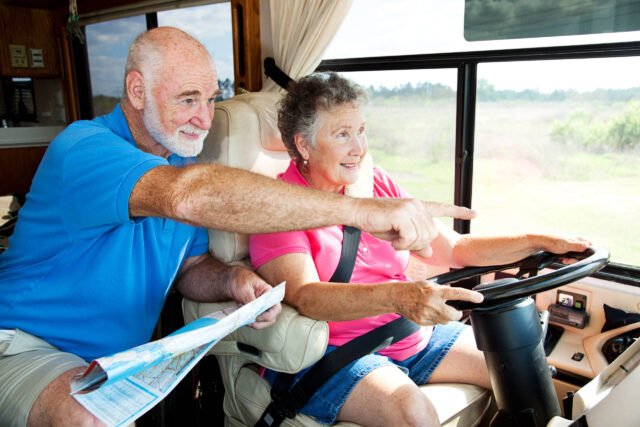
The desire to get outside while still social distancing has, over the last few months, created huge interest in the sale and rental of motor homes, travel trailers and recreational vehicles (RVs) of all types. People who want to travel but are concerned about staying in hotels or eating in restaurants, have turned to RV’s as their new accommodations on wheels.
But RV’s pose risks the new RV driver, whose only experiences with driving has been with an automobile or small truck, may not expect. And, while the driving experience may feel like driving a car, it is not the same and those differences should be understood and respected.
RVs are notorious for their unanticipated blind spots for drivers, which the drivers don’t recognize as blind spots until it is too late. RV’s are also much heavier and bigger than cars and require longer braking times and distances. They have larger centers of gravity and lack maneuverability which, if not handled properly, cause them to tip over or easily go out of control. To add to the danger, common car crashes, that otherwise may not have resulted in serious injury, are worsened by the increased size and weight of an RV.
Inexperienced RV driving also contributes to collisions. Many states do not require special training or permits to drive an RV. Another contributor to collisions is the age of the average RV driver. A significant percent of RV drivers are over the age of 55, as this age demographic is better able to afford the vehicles and typically have more free time. As we know, however, statistically as people age their response times get slower and their vision gets weaker.
But an RV’s greater size and weight, lack of visibility, and longer braking times and poorer maneuverability, or driver inexperience and lack of training are not the only factors that make RV travel dangerous. Add in, speeding, high winds that unexpectedly push the vehicles, overtired drivers, overloaded vehicles, runaway vehicles on unfamiliar or steep roads, higher centers of gravity, miscalculations in turns and stopping distances, poorly balanced or secured loads, improperly hitched or attached recreational trailers or mounts, and the increase in blind spots, and one can see how they can combine to spell catastrophic disaster.
While the above examples may be frightening, an RV driver certainly be aware of them, as should other defensive drivers on the road. Those risks can be minimized by taking the following steps:
- Get the smallest RV that will suit your needs;
- Get training on how to drive an RV before taking it on a trip;
- Read and understand the RV user’s manual, and make sure you fully understand where all controls are and what they are for- prior to your trip;
- Follow the same advice you’d give to others about not driving tired, distracted or otherwise impaired;
- Plan out your trip so that you don’t need to make last minute decisions on the road;
- Know the rules about what passengers can and cannot do. For example, Florida Statute §316.614 requires that everyone in the front of the vehicle, and all people ages 6 to 17 in the rear of the RV, wear a safety belt (younger children must be in an appropriate child restraint, which is governed by Fl. Stat. §316.613). However, this rule does not apply to the “living quarters” of an RV.
- Watch some of the many videos on YouTube on how to drive an RV. Simply go to YouTube.com and search “How to Drive an RV.”
To help ensure the safety of everyone on the shared roads, please drive cautiously and remember the dangers that can occur while driving and alongside RVs and other types of recreational vehicles.
Rader Law Group has extensive expertise in handling all types of vehicular collisions, including RV cases. We welcome your questions and comments, or if you’d like a free consultation, please feel free to contact us.
